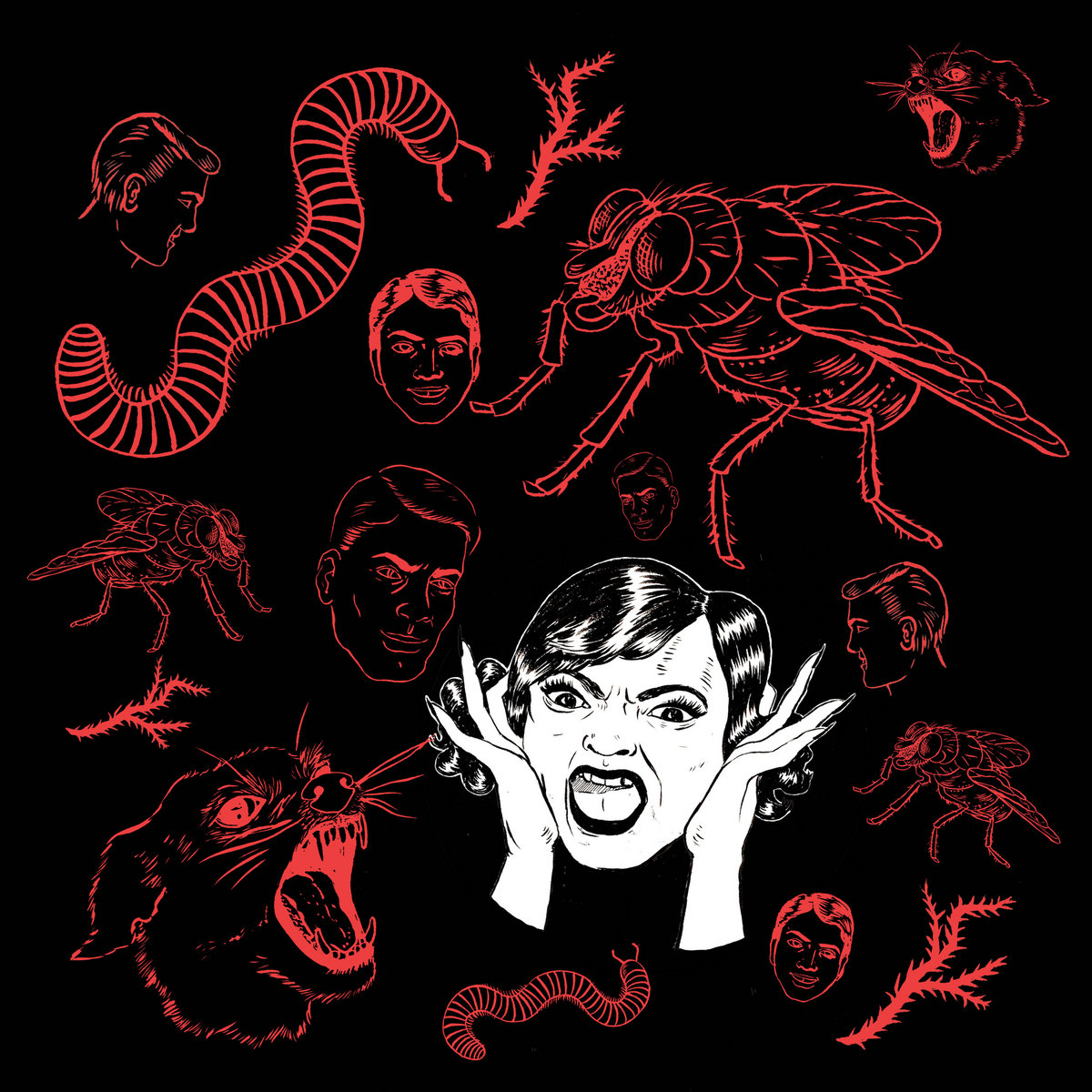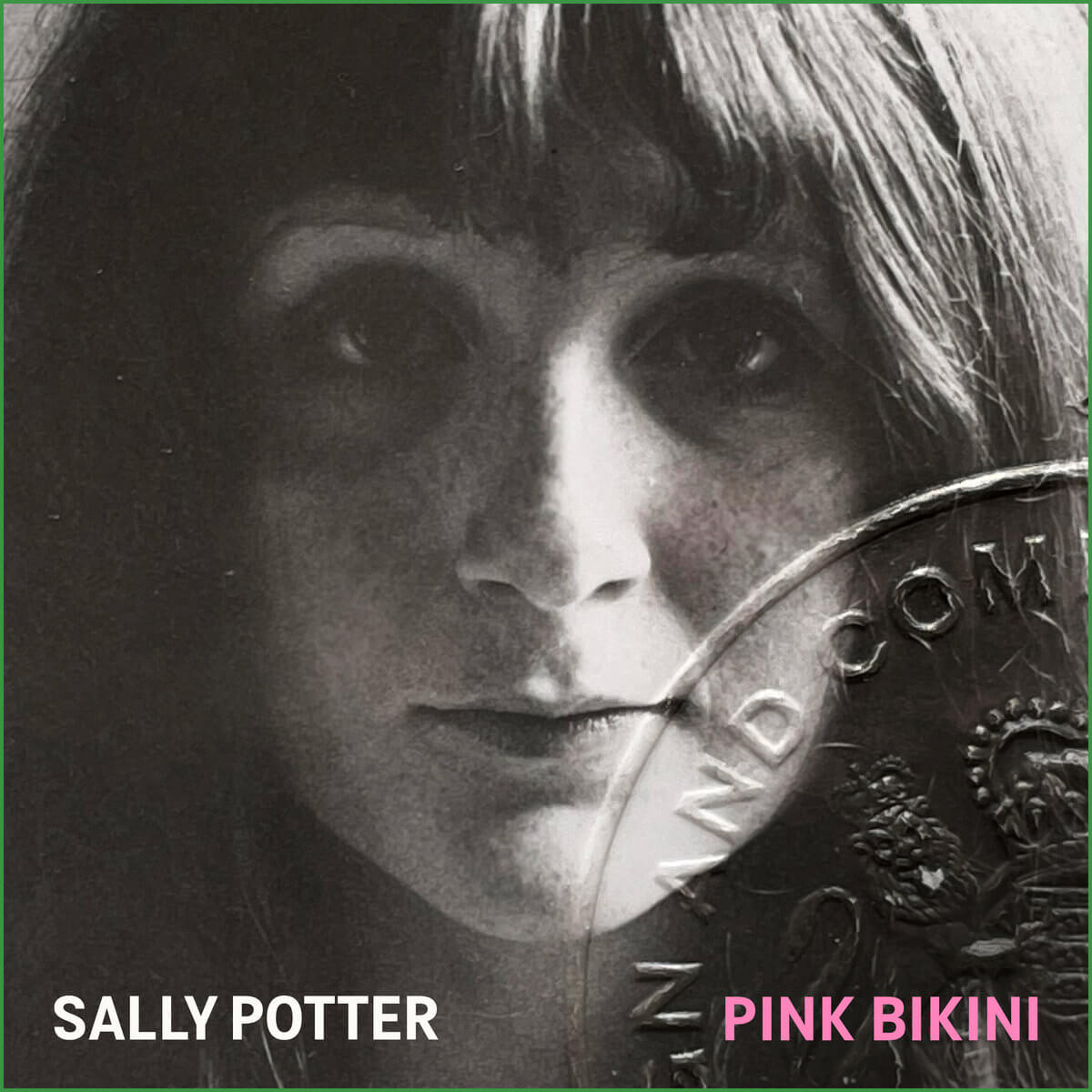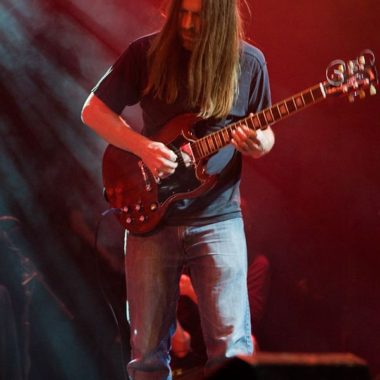Sonic revival. Concert performances by Sonic Youth were glorious things—transcendent, intoxicating, very nearly overwhelming. Sound systems and synapses couldn’t always handle them but the energy transference was reliably powerful. The band played what is commonly referred to as its last show on the WIlliamsburg Waterfront in Brooklyn on August 12, 2011. They actually went on to play already scheduled festivals in South America which, by at least some accounts, lacked the luster of their usual shows. But the WIlliamsburg date was their New York goodbye, and for a band that was conceived in and always celebrated the city, it’s maybe OK if the lore outweighs actual history.
I saw them many times, going back to sometime in the mid ‘80s, but sadly missed their New York farewell. I’m glad ,though, to get to experience it a dozen years later with the issue of Live in Brooklyn 2011 (out August 11 on double LP and double CD from Silver Current Records and digitally a week later from Goofin’) and to discover what a proper send-off it was. They start off strong with “Brave Men Run (In My Family)” and “Death Valley ‘69” from 1985’s Bad Moon Rising and continue with “Kotton Krown” (Sister, 1987), “Kill Yr Idols” (from the 1983 EP of the same name) and “Eric’s Trip” (Daydream Nation, 1988). Not to get all “I like your old stuff” but it’s great to hear the band reach back to songs they’d long since dropped from their setlists. They follow that with another surprise, two cuts from 2009’s The Eternal, after which Thurston Moore announces “When we started rehearsing two days ago, we decided to go, like, super deep, so it’s been a while since we played some of these.” And indeed, a couple more from Bad Moon and “Tom Violence” from 1986’s EVOL follow. In all, they play 17 songs, 11 of them from before their 1990 big label breakthrough. The two encores include 1985’s “Flower” and a glorious 9 minutes of “Inhuman” from 1983’s Confusion is Sex. The songs aren’t good because they’re old, it’s how much they put into them 20 years after writing them and how fantastically tight they play them, how in control they are of their mayhem. That’s not entirely due to drummer Steve Shelley, the unsung hero of the band, but he’s a big part of reigning in the running wild guitars. He sounds great and the mix is clear and clean. Other archival Sonic Youth albums have been exciting; this one is essential.
Bush Tetras Live On. With their singles “Too Many Creeps,” “Things That Go Boom in the Night” and “Can’t Be Funky,” Bush Tetras were a key component to New York’s post-punk, following the dance grooves, incendiary guitar and uneasy lyrics coming out of England. Their scattered discography was pulled together on the 30-track Rhythm and Paranoia in 2021. In a bitter irony, just before the set’s release—and as they were beginning to discuss a new album—founding drummer Dee Pop died unexpectedly. Guitarist Pat Place and singer Cynthia Sley persevered with the able support of Sonic Youth’s Steve Shelley, who worked with them in the studio to complete the songs and then produced the album. They Live in My Head (LP, CD and download from Wharf Cat Records out now), is only the third full-length release in their long history. It has a harder edge, some of the tracks even sound a bit rote rock, but there’s enough there of what made them great to make it work. In “Walking Out the Door”—at five and a quarter minutes, the album’s longest track—Sley dishes sardonic attitude over a solid groove before the song dissolves into an oddly catchy, mysterious and slightly dubby second half. Other songs are more straightforward, but Place’s guitar sears throughout. (RB Korbet of the original lineup of King Missile handles bass.) It’s good to kmow that, after more than 40 years, they’re still dancing through urban fear.
Reminiscing in mascara and a bikini. Seventy-one years of age might be a bit outside the statistical norm for a debut album but even so, Sally Potter is anything but a slacker. She started making films at 14, went on to study dance and choreography, was a member of London’s Feminist Improvising Group in the 1970s and worked as a singer and lyricist with Lindsay Cooper (Henry Cow, David Thomas and the Pedestrians), notably on the 1991 album Oh, Moscow. She wrote and directed the 1992 film Orlando, for which she also co-wrote the score, and wrote the score and sang for her 1997 The Tango Lesson. Pink Bikini (self-released for download and streaming services on July 17) is a promising start for a new career. It’s an album looking back at life, at youthful mistakes, but not with regrets. There’s a confidence to the record, and also a bit of weariness, that calls to mind Marianne Faithfull’s mature albums (which is no faint praise, few people who aren’t Tom Waits can claim to have recorded a definitive version of a Tom Waits song). The songs are all Potter’s, with able accompaniment by guitarist Fred Frith (also of Henry Cow back in the Swinging London days) and a largely acoustic band of guitar, double bass, harp and percussion. On the closing track, Potter sings with a hint of pride to her younger self: “So dance, dance, dance girl dance / Hear your body singing / Your eyes wide open / Look, your life is beginning.” It’s like she’s singing through time, imparting wisdom to the woman who lived the life she’s writing about now. One suspects that dancing girl got the message.
#IYKYK Dolly Parton’s 2002 album Halos & Horns included a cover of “Stairway to Heaven” that was a far cry more convincing than her recent reworkings of Heart and Queen but setting that aside, one thing’s for sure: give her an award she doesn’t deserve and she’ll damn well set about earning it.











